The following tools are used for precision energy assessment and analysis. Most of these are non-contact instruments that facilitate inline measurements without the need to stop the regular functioning of the plant. These instruments are capable of delivering auto-generated reports immediately.
Acoustic Imager
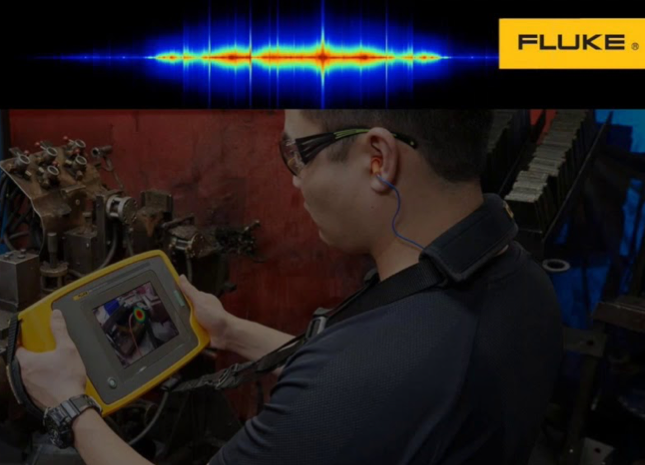
Used for detecting air, vacuum, or gas leaks. It can detect, visualize, and analyze sound waves, particularly in the ultrasonic range. Additionally, it can identify partial discharges or corona discharges in electrical equipment like transformers and switchgear, as well as mechanical abrasion in rotating machinery such as bearings, gears, or fans.
Advantages:
- Reducing Energy Waste: Identifies leaks and inefficiencies in systems like compressed air, HVAC, and vacuum systems, leading to reduced energy losses.
- Improving Equipment Efficiency: Detects mechanical or electrical faults that reduce the efficiency of machinery, helping to maintain optimal operation.
Click here to know more about the working of an acoustic imager
Click here to know more about the instrument
Power Quality Analyzer

Used to measure the flow of power in an electrical system and monitor key electrical parameters such as voltage, current, frequency, power factor, harmonics, and total harmonic distortion.
Advantages:
- Identifying Energy Losses: Detects inefficiencies such as poor power factor, unbalanced loads, harmonics, leading to reduced energy consumption and lower operational costs.
- Evaluating Harmonics: Helps identify harmonics, which can cause equipment overheating, malfunctions, and increased energy consumption.
- Preventing Equipment Damage: Aids in preventing damage to sensitive electrical equipment that could be affected by power disturbances like voltage spikes or transients.
Click here to know more about the instrument
Thermal Imager
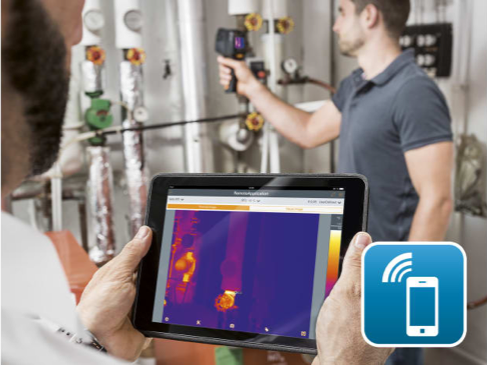
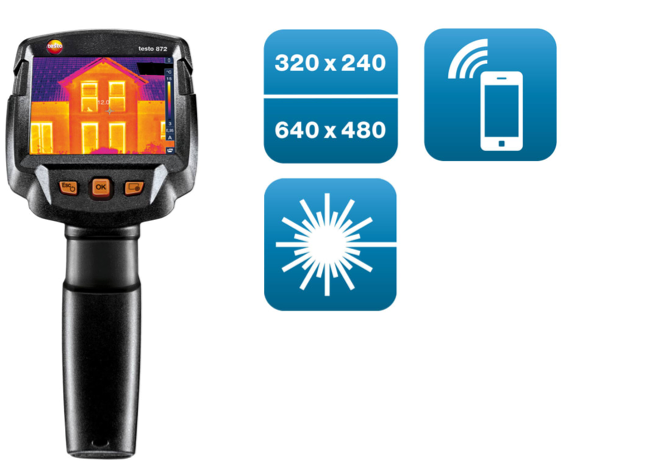
Used to provide high-quality, professional-grade thermal imaging with excellent sensitivity, detecting temperature differences as small as 0.05°C and featuring automatic hot-cold spot recognition. This instrument captures thermal images of equipment based on infrared radiation, allowing users to assess the actual and maximum temperatures in and around the equipment within a specific view range. Thermography is utilized for assessing boilers, furnaces, motors, electrical panels, APFC units, and solar panels.
Advantages:
- Non-Contact Measurement: Allows temperature measurements without direct contact, ensuring safety and preventing disturbances to the equipment.
- Preventive Maintenance: Identifies potential issues before they become critical, enabling proactive maintenance and reducing downtime.
- Energy Efficiency: Helps identify areas of heat loss, contributing to improved energy efficiency in systems.
- Quality Control: Monitors the thermal performance of equipment to ensure consistent quality in manufacturing processes.
- Safety Assurance: Detects overheating components, enhancing workplace safety by preventing potential hazards.
- Process Optimization: Provides insights into operational efficiency, allowing for process adjustments and optimizations.
- Versatile Application: Suitable for a wide range of applications across various industries, including manufacturing, energy, and infrastructure.
- Cost Savings: Reduces operational costs by minimizing energy waste and preventing costly equipment failures.
Click here to know more about the instrument
Power Clamp Meter
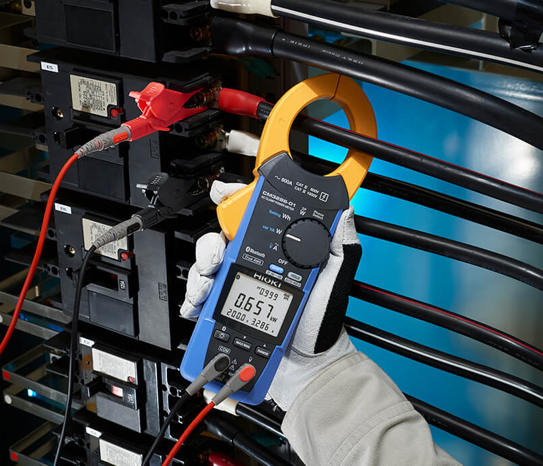
Used to measure current, voltage, resistance, power factor, frequency, and to monitor electrical loads, energy consumption, and overall system efficiency.
Advantages:
- Data Logging: Enables the recording of measurements over time for analysis, helping to identify trends and inefficiencies.
- Safe to Use on Live Systems: Allows measurements to be taken without disconnecting circuits, ensuring safety and minimizing downtime.
- Multifunctional Equipment: Combines multiple measurement capabilities in one device, reducing the need for multiple tools and streamlining assessments.
Click here to know more about the instrument
Click here to know more about the instrument
Ultrasonic Flow Meter
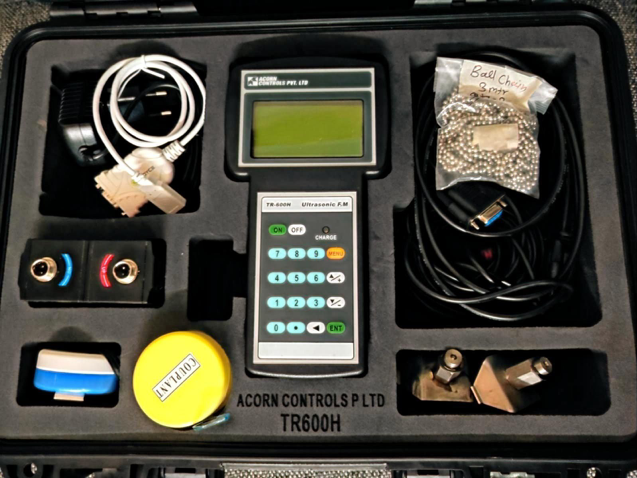
Used to measure the velocity of fluid in a pipe or tube using ultrasonic sound waves, operating based on the Doppler effect.
Advantages:
- Non-invasive: Non-intrusive, allowing for easy retrofitting onto existing systems without interrupting the flow.
- Wide Use: Suitable for measuring a variety of fluids such as water, air, steam, and more, making it ideal for industrial energy systems.
- Leak Detection: Continuous monitoring of flow rates enables early detection of leaks in piping systems, enhancing energy efficiency and reducing waste.
Click here to know more about the instrument
Flue Gas Analyzer
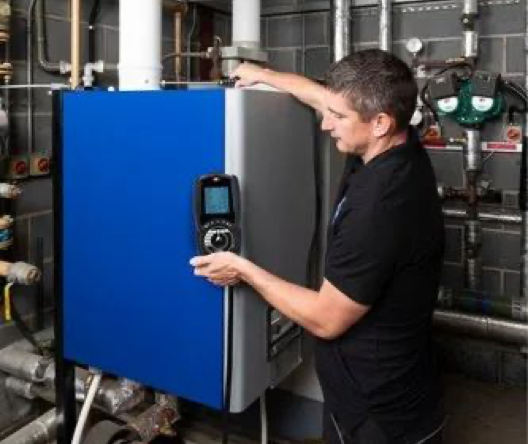
Used to measure the composition of gases (O₂, CO₂, CO, NOx, SOx) emitted by combustion processes in systems like boilers, furnaces, and other industrial heating equipment
Advantages:
- Cost Savings: Enhances combustion efficiency, reducing fuel consumption and lowering operational costs.
- Environmental Benefits: Helps reduce harmful emissions by optimizing combustion processes, contributing to environmental sustainability.
- Optimization: Regular use can help optimize the performance of boilers and furnaces, improving efficiency and prolonging equipment life.
Click here to know more about the instrument
Lux Meter
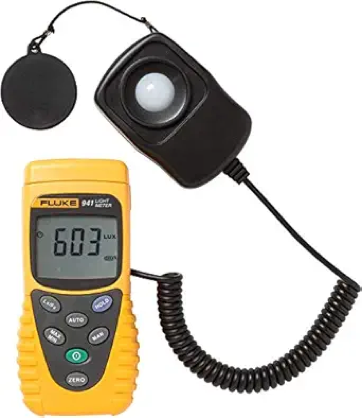
Used to measure the amount of light falling on a surface, known as illuminance, which is essential for ensuring adequate lighting in spaces such as offices, factories, warehouses, and public areas.
Advantages:
- Accurate Lighting Assessment: Provides precise measurements of current lighting levels, ensuring optimal conditions for specific tasks.
- Improving Lighting Efficiency: Identifies opportunities to reduce excess lighting, replace inefficient systems, and enhance energy efficiency.
- Supporting Sustainable Practices: Encourages the use of energy-efficient lighting solutions, contributing to reduced environmental impact and lower energy costs.
Click here to know more about the instrument
Anemometer (Normal/Vane type)
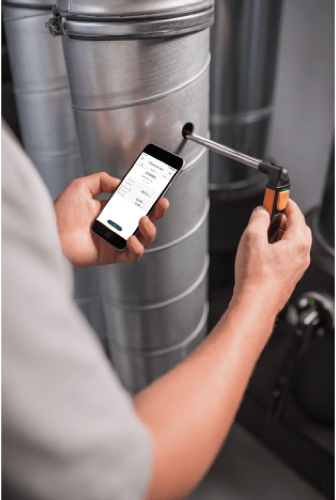
Used to measure airflow velocity or wind speed, making it a valuable tool for assessing airflow in HVAC systems and ensuring efficient energy use.
Advantages:
- Accurate Airflow Measurement: Delivers precise airflow data, crucial for optimizing HVAC systems and ensuring adequate ventilation.
- Identifying Energy Loss: Helps detect areas with inefficient airflow or underperforming fans, reducing unnecessary energy consumption.
- Improving Indoor Comfort: Ensures even air distribution throughout a building, preventing the overuse of heating or cooling systems and enhancing comfort.
Click here to know more about the instrument
Hygrometer
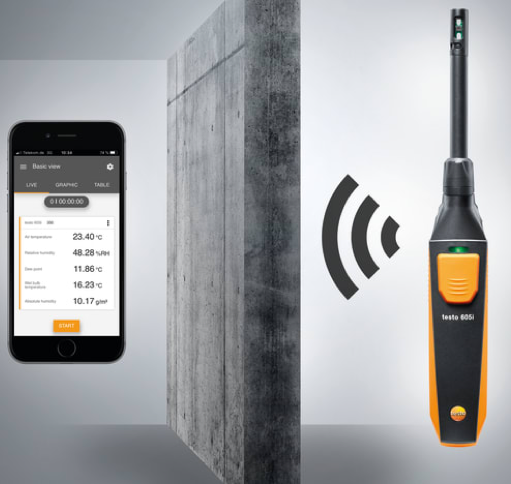
Used to measure the humidity or amount of moisture in the air.
Advantages:
- Comfort Maintenance: Provides humidity data to fine-tune HVAC systems, enhancing indoor comfort and air quality.
- Energy Efficiency: Highlights areas for dehumidification or humidification to lower energy use in heating and cooling.
- Mold Prevention: Helps prevent mold and structural damage by monitoring moisture levels to avoid excessive humidity.
Click here to know more about the instrument
Infrared Laser Thermometer
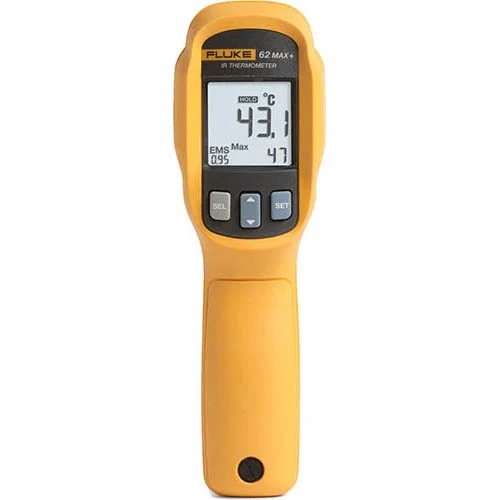
Used for measuring high temperatures, relying on infrared radiation emitted by an object.
Advantages:
- High-Temperature Measurement: Accurately measures extremely high temperatures, beyond the range of standard thermometers.
- Non-contact: Ideal for environments where direct contact with the object is unsafe or impractical.
- Efficiency: Facilitates monitoring and controlling high-temperature processes, improving operational efficiency.
Click here to know more about the instrument
Tachometer
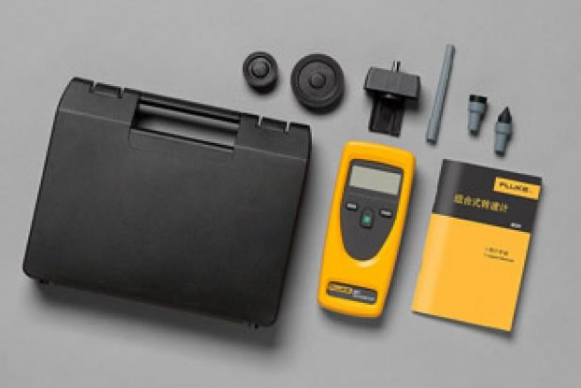
Used to measure the rotational speed of shafts or disks in motors, engines, or rotating machinery.
Advantages:
- Equipment Maintenance: Provides essential data on machinery performance, helping to identify wear, inefficiencies, or irregularities in motors and pumps.
- Energy Efficiency: Helps ensure that motors run at optimal speeds, reducing energy use and extending equipment lifespan.
Click here to know more about the instrument